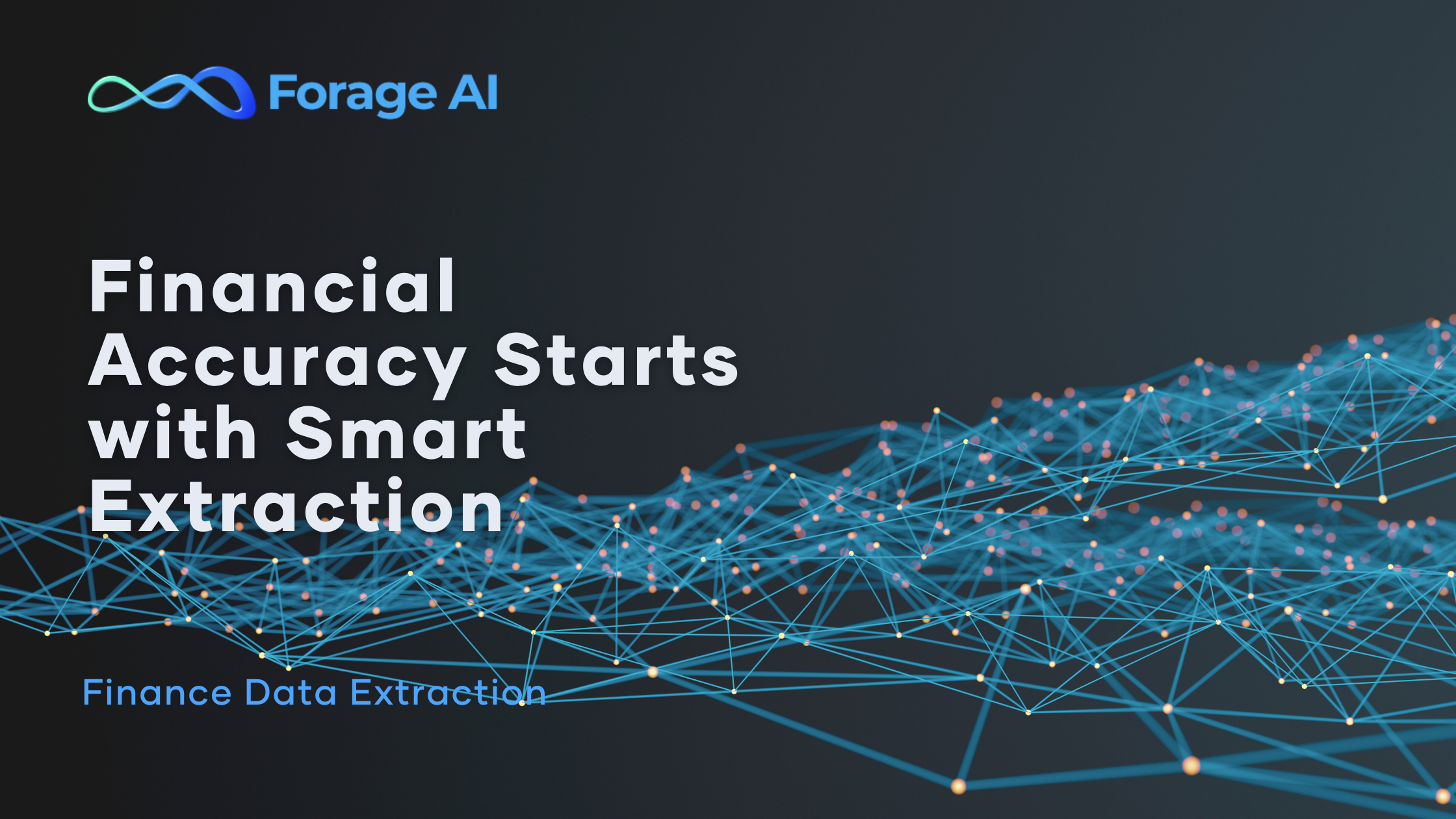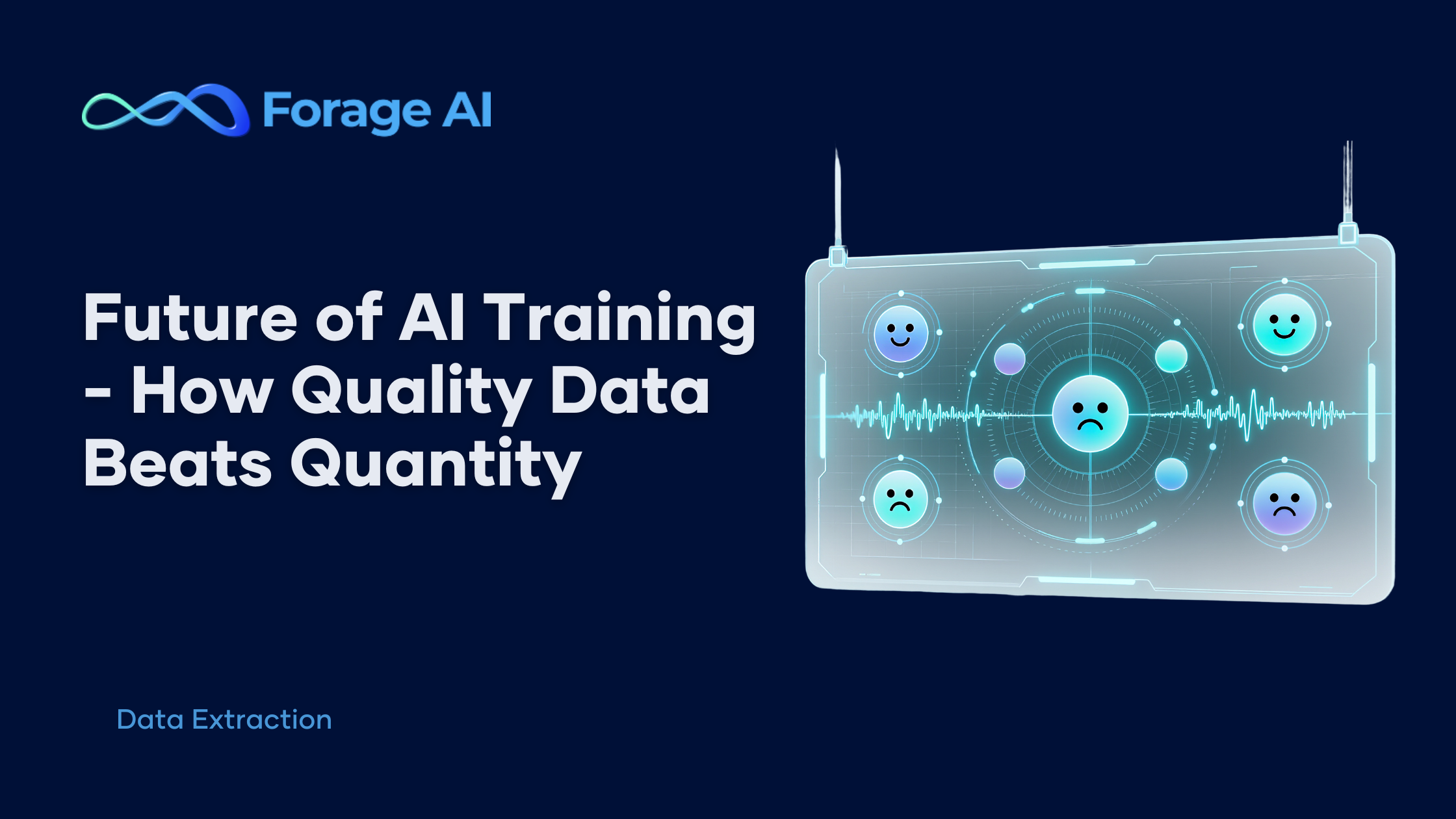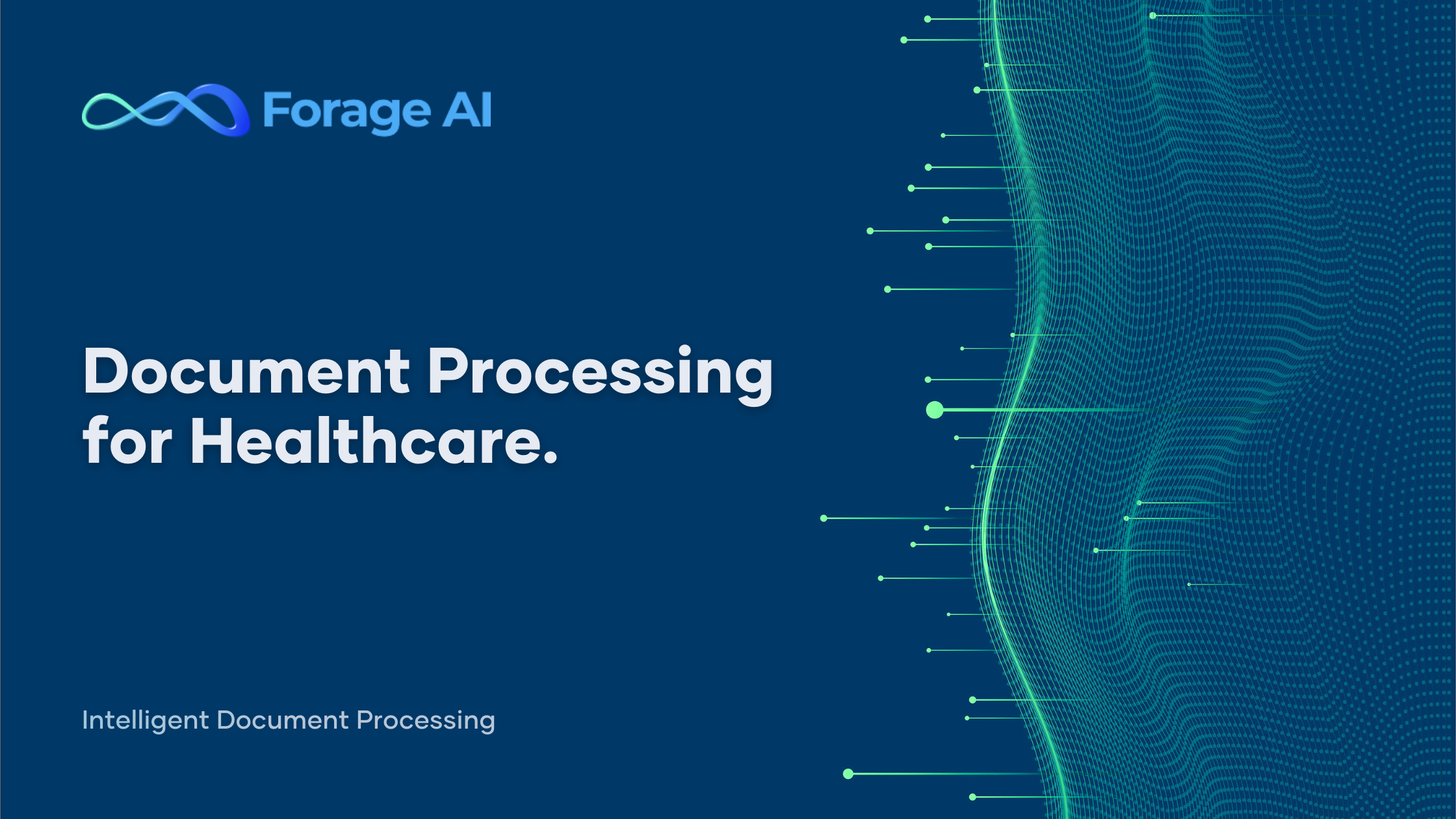Your underwriting team just spent three days manually extracting risk data from 200 loan application packages. Meanwhile, your competitor’s AI system processed 2,000 assessments in just three hours.
This isn’t just about speed—it’s about survival in a data-driven world where 94% of organizations rate business intelligence as critical to their success (according to a MicroStrategy report). While you’re still copying numbers from PDFs, competitors are making real-time decisions that leave you behind.
This guide explains what financial data extraction is, how it transforms business operations, and why it’s becoming increasingly important. You’ll learn about the limitations of manual financial processes, how automated extraction works in practice, the measurable benefits organizations achieve, common implementation challenges, and how modern AI solutions address these obstacles
The gap between manual financial processes and automated intelligence is widening fast. Companies stuck in the old way of doing things don’t just work harder—they lose market share to businesses that work smarter.
The Manual Data Trap
Here’s the uncomfortable truth: industry reports indicate that 48% of manufacturing companies still rely on manual data extraction for their financial processes. That means nearly half of all businesses are stuck in a system where humans read documents, type numbers into spreadsheets, and hope they didn’t make mistakes.
The math on manual processing is concerning. Research shows that human error rates in manual data entry typically range from 3% to 8% for complex financial documents. Even at the lower end, this means for every 100 data points your team enters manually, at least 3 contain mistakes. These aren’t small typos—they’re errors that compound into major financial decisions based on wrong information.
The cost adds up quickly. Gartner estimates that organizations lose an average of $12.9 million annually due to poor data quality. That’s not just the cost of fixing mistakes—it’s lost opportunities, compliance issues, and strategic decisions made with incomplete information.
Your employees feel the pain too. Research shows 40% of workers spend up to a quarter of their entire workweek on manual data entry. That’s 10 hours per week per employee, spent on work that machines can do better, faster, and more accurately.
There’s got to be a better way. And there is.
While your team struggles with manual processes, competitors are already moving. The global data extraction market is exploding from $2.14 billion in 2019 to an expected $4.9 billion by 2027.
Financial Data Extraction Explained
Financial data extraction is like having a super-smart financial analyst who never gets tired, never makes mistakes, and can read thousands of documents simultaneously. Instead of humans manually copying information from loan agreements, securities filings, and regulatory reports, technology automatically finds, reads, and organizes the data you need.
The process breaks down into six simple steps:
Collection involves capturing all relevant financial documents—loan applications, credit reports, regulatory filings, SEC documents. The system ingests digital files from email, scanners, or direct feeds across your organization.
Digitization converts everything into machine-readable text using advanced OCR technology. The system processes images and PDFs, extracting clean text data regardless of document quality or format complexity.
Understanding is where the magic happens. The system doesn’t just see letters and numbers—it comprehends what they mean. It knows that “Credit Exposure Limit” in a derivatives contract is different from “Notional Amount,” even when document formats change between counterparties.
Extraction pulls out only what you need. Instead of copying entire documents, it grabs specific data points: vendor names, payment dates, amounts, account numbers. It’s like having an assistant who highlights exactly what matters to you.
Validation double-checks everything. The system catches inconsistencies, flags unusual amounts, and cross-references data to make sure it makes sense. It’s quality control that never misses anything.
Integration puts the clean data exactly where you need it—your accounting software, analytics dashboards, or reporting systems. No more manual uploading or copying between programs.
You’ve got three main approaches to choose from:
Manual extraction still happens in many companies. Humans read documents and type data into systems. It’s accurate when done carefully, but slow and expensive.
Basic OCR (Optical Character Recognition) tools scan documents and convert them to text. These systems can achieve 98-99% accuracy with clean, well-formatted documents. But they struggle when layouts change or document quality is poor.
AI-powered document extraction uses machine learning and natural language processing to understand context and adapt to new formats. These systems achieve 99%+ accuracy even with complex, messy, or inconsistent documents.
The market is moving fast because the technology finally works. Business leaders see results that seemed impossible just a few years ago.
The Business Benefits That Matter
Speed & Efficiency Gains
The speed improvements shock even seasoned operations managers:
- Throughput increases by 60% after implementing automated extraction.
- Tasks that took hours now finish in minutes — manual bottlenecks disappear overnight.
- Volume scaling becomes effortless — teams handle thousands of documents where they once managed hundreds.
Accuracy & Quality Improvements
Accuracy improvements matter even more than speed:
- Automated systems achieve 95-99% accuracy compared to 60% typical in manual processing.
- Error-related costs virtually disappear — no more fixing mistakes that cascade through reports.
- Compliance risks drop dramatically — consistent data handling meets regulatory requirements.
Financial Impact & ROI
The financial impact is measurable and significant:
- Data-driven organizations are 19x more likely to be profitable than their competitors as per Mckinsey’s research.
- Return on investment becomes measurable within months — not the typical years-long wait for technology payback.
- Cost savings compound over time — every manual process eliminated stays eliminated, creating permanent efficiency gains.
Real-World Transformations
Due Diligence: AI systems process complex financial documentation instantly, enabling investment teams to focus on analysis rather than data gathering. Organizations report significant time savings in document review while improving accuracy through automated cross-referencing.
Regulatory Compliance: Systems continuously monitor for regulatory changes and flag compliance issues instantly. Instead of scrambling during audit season, you have clean audit trails ready year-round.
Strategic Decision-Making: 73% of organizations report faster and more accurate decision-making when they use extracted financial data. Executives get real-time insights instead of waiting for month-end reports.
Market Intelligence: While competitors rely on quarterly reports, you’re tracking competitor pricing, market changes, and industry trends in real-time. You spot opportunities and threats before they show up in traditional reporting.
These benefits sound amazing. So what’s stopping everyone from doing this?
The Problems That Hold Businesses Back
Document Format Challenges
The format nightmare hits every company differently:
- Document variety overwhelms basic systems — loan agreements, prospectuses, and derivatives contracts all use different layouts, fonts, and structures.
- Template inconsistency breaks automation — each financial institution uses different document structures for identical transaction types.
- Traditional systems expect uniformity and fail when they encounter something new.
Data Quality Issues
Document quality creates unpredictable results:
- Poor scans confuse extraction tools — faded text, poor resolution, and handwritten notes kill accuracy.
- Error rates spike with low-quality inputs — you spend more time fixing mistakes than you save from automation.
- Many companies abandon OCR tools when accuracy drops below useful levels.
Legacy System Integration
Legacy system integration causes expensive headaches:
- 49% of data professionals cite compatibility as their biggest challenge
- Integration projects stretch from weeks into months — your extraction tool needs to talk to accounting software from 2010.
- Custom modifications complicate everything — CRM systems and reporting tools weren’t designed for modern automation.
Security & Compliance Concerns
Security concerns keep executives awake at night:
- Financial data is highly sensitive and heavily regulated — GDPR, CCPA, SOX compliance all require specific handling.
- One breach or violation costs millions in fines and destroyed reputation.
- Centralized data creates attractive targets for cyberattacks.
Scaling Complexity
Scaling beyond pilot projects reveals hidden complexity:
- What works for 100 documents fails at 10,000 — performance degrades and error rates increase.
- Costs spiral out of control as volume increases.
- Success in pilots doesn’t guarantee enterprise success.
Skills & Resource Gaps
The skills gap frustrates technically sophisticated teams:
- According to a Capital One survey, 82% of organizations need help overcoming data collection challenges
- Building extraction systems requires rare expertise — machine learning, document processing, system integration, and regulatory compliance
- Most companies can’t hire these skills fast enough or afford to build them internally
These aren’t small problems. They’re deal-breakers that force many companies back to manual processes, accepting the costs and limitations rather than fighting through implementation challenges.
But what if someone solved all these problems for you?
How Forage AI Solves What Others Can’t
We’ve spent 12 years solving exactly these problems for companies ranging from startups to Fortune 500 enterprises. Our approach combines cutting-edge AI with proven expertise to address every barrier that stops other solutions from working.
Autonomous Intelligence powered by agentic AI means our systems reason through complex financial documents like experienced analysts. These AI agents adapt in real-time, learning to handle new document formats and regulatory changes without human intervention. When your supplier changes their format or a new compliance requirement emerges, our agents automatically adjust their approach, ensuring uninterrupted processing.
Interactive Document Intelligence transforms your financial statements into queryable knowledge bases through RAG technology. Instead of searching through thousands of pages manually, ask questions in natural language: “How has our competitor’s debt-to-equity ratio changed over five years?” Get instant, contextually accurate answers with supporting evidence from source documents.
Seamless Integration & Enterprise Security that connects with any business system through flexible APIs while meeting the highest standards for financial data protection. End-to-end encryption protects data in transit and at rest with detailed audit trails. We integrate with modern cloud platforms and legacy systems alike—implementation takes weeks, not months.
Continuous Learning Partnership means every extraction improves the system. Our AI learns from each document processed and incorporates your feedback, creating a virtuous cycle of improvement. Having processed over 10 million documents and crawled 500+ million websites, our systems handle any volume you can generate while getting smarter with each interaction. Our 100+ person team includes specialists in finance, AI, and regulatory compliance—we don’t just provide software, we provide ongoing expertise.
One financial services CEO told us: “Working with Forage has been a game-changer for our startup… Their team doesn’t just deliver solutions; they tailor every detail to fit our specific needs with an enthusiasm that truly shows they care about our success as much as their own.”
We don’t just extract data. We solve the entire problem—technical challenges, integration headaches, security requirements, scaling issues, and ongoing support. That’s why clients become long-term partners instead of looking for alternatives.
Your Next Steps
Financial data extraction isn’t optional anymore—it’s survival. While 48% of companies still use manual processes, many finance departments have already adopted AI solutions. The companies winning in today’s market aren’t necessarily the biggest or oldest—they’re the ones that use data most effectively.
Ready to stop drowning in manual financial processes? Contact Forage AI to see how we can transform your financial data chaos into competitive advantage. We’ll show you exactly how our solutions work with your specific documents, systems, and requirements.
Your competitors are already moving. The question is whether you’ll lead or follow.
FAQ’s
1. What is financial data extraction?
Financial data extraction involves capturing and transforming information from both structured and unstructured documents—like bank statements, invoices, and financial reports—into machine-readable formats for analysis and automation.
2. How does AI improve financial data extraction?
AI enhances extraction with technologies like OCR, natural language processing (NLP), and intelligent document processing (IDP). These systems convert scanned documents into structured data, learn from patterns, and continually improve-ensuring high accuracy and faster processing.
3. What are the benefits of automating financial data extraction?
Automated extraction brings major advantages:
- Speed & Efficiency: Processes large volumes of data swiftly.
- Accuracy: Reduces human errors that often arise in manual entry.
- Scalability: Easily handles growing data needs without added headcount.
- Cost Savings: Cuts labor costs and processing time.
- Compliance & Auditability: Offers better validation and traceability.
4. What types of documents can financial data extraction handle?
Financial data extraction can process a variety of documents including receipts, pay slips, loan applications, bank statements, tax forms, and financial reports-both digital and paper-based.
5. How do businesses use financial data extraction in real-world operations?
Common applications include:
- Expense processing & invoice automation
- Bank statement reconciliation
- Loan underwriting workflows
- Financial reporting and audit preparation
These applications enable faster operations and more accurate financial insights.
6. Why should businesses choose Forage AI for financial data extraction?
Forage AI offers tailored AI-powered extraction services—built to fit your documents, systems, and goals. Rather than piecing together manual processes, you get scalable automation that transforms your financial data workflows into a competitive edge.





